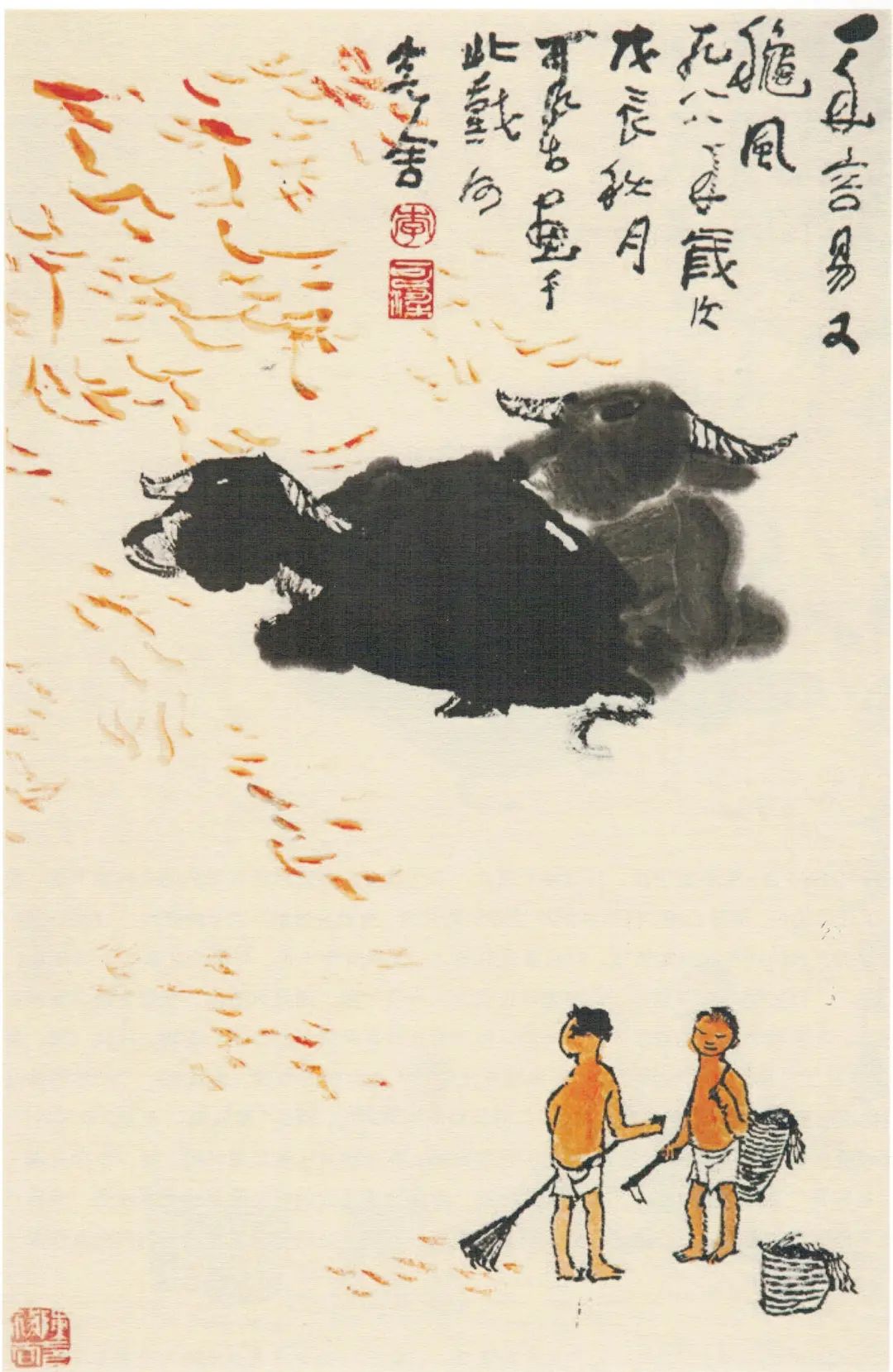Online painting and calligraphy works of famous artists appreciation (XIX)

Autumn Breeze Painting
1988
68.1cm×45cm
Postscript
It's easy to have an autumn breeze again
In the autumn month of Wuchen, 1988
Painted by Kechen at his guest house in Beidaihe.
Seal
Li, Kechen, Chen Yanwu
Appreciation of the work
The phrase "It's easy to have an autumn breeze again" was originally inscribed by Baishi on Li Keran's cow herding picture, which is simple, timeless, and intriguing. The difference between "Autumn Breeze" and Li Keran's other cattle herding pictures is that it does not paint any background scenery, such as mountains, ponds, trees, flowers and birds, but only red leaves flying in the air and on the ground with color dots. Two old cows are resting on the ground when they have had their fill, while two shepherd boys, one holding a sickle and the other a bamboo rake, are trying to collect some fallen leaves. In the countryside, such scenes are common. Li Keran liked to paint autumn scenes, but his autumn scenes never had a stern autumnal feeling, but always overflowed with the joy of harvest, and the mood was bright and warm. He once used Shi Tao's phrase "Autumn wind blows down red rain" as a picture of cattle herding, depicting the red leaves in the sky and on the ground, like the red rain flying around the herd boy, which is splendid. He also used Du Mu's "Frosty Leaves Are Red Like February Flowers" as the title of his cow herding picture, and inscribed it with the words "I love such a poem because it is free from the air of desolation". Li Keran came from a family of lower-class laborers and had the simple qualities of a common laborer, but he had very few of the sentimental and sentimental characteristics of a literary artist, much like Baishi Lao. Like many of Qi Baishi's works, his paintings of cattle herding reveal a longing for a peaceful and self-sufficient rural life. Deep in his heart, he also had a strong sense of the Chinese countryside, and his deep attachment to traditional art and Eastern culture is also related to this.
Li Keran's various cattle paintings in his later years became more and more concise, and his brushwork and ink became more and more sophisticated. The old cows in the picture are painted with heavy, burnt ink and medium-light ink, and the two cows are huddled together, forming a clear outline of different shades of black. The cowherd boy and the bamboo basket are all outlined, and the lines are exactly the lines that "accumulate points to form lines. The lumpy structure of the cow and the linear structure of the shepherd boy form an interesting contrast, and the whole work appears very simple and clear, but not monotonous.